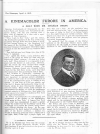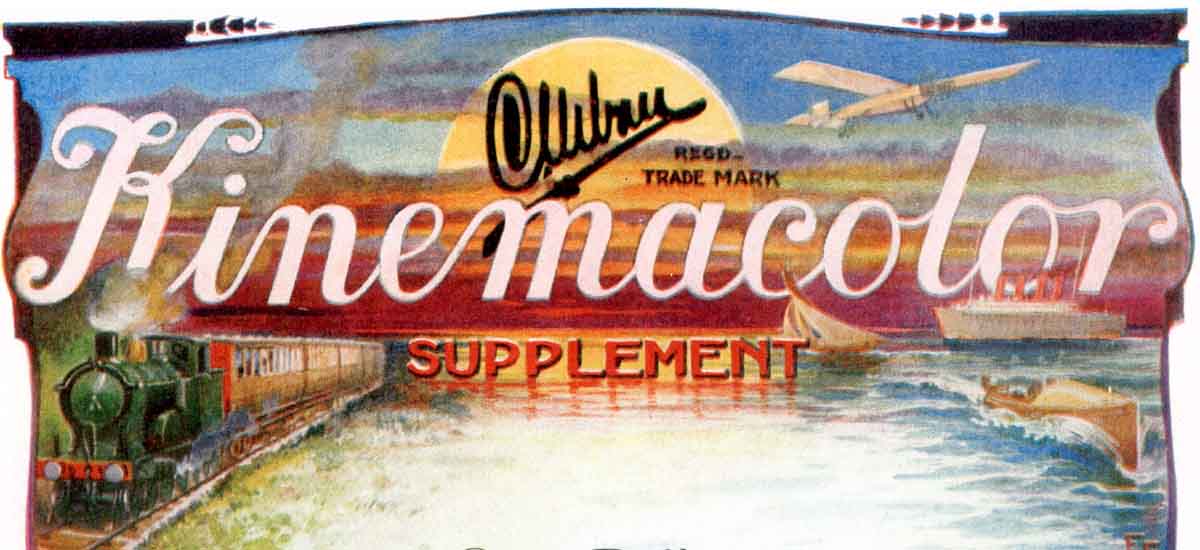
David Cleveland, retired head of the East Anglian Film Archive, and I decided
that to celebrate the 100 years of Kinemacolor we would like to project some Kinemacolor films using a Kinemacolor projector. David found a projector at the Birkenhead Museum; the museum said the we could
borrow it and use it.
When we went to see it we found that there were some missing parts and that
the lamp house was fitted with a carbon arc. We decided that we would not be
able to use the carbon arc so we had to construct a light source.
Examination of the projector was rather puzzling as it had a shutter on the
front of the lens which also rotated once per pull down of the film.
The Kinemacolor system used a red and green filter wheel which was attached to the
shutter shaft between the gate and the lamp house and rotated once for every two
frames. There should also have been a shutter between the gate and the
lens. In addition the projector had a facility for hand cranking; it
appears that this model was designed for New York where it was not permissible
to run nitrate film using a motor. The first task was to make a crank handle.
When this was completed attempts to turn over the mechanism failed as the shaft
with the shutter was bent. The shaft was removed and it was found that it was
identified with Number 19 and that it had an extension riveted on to it.
When we borrowed the projector it was agreed that as it was a museum piece we
could only make alterations that could be undone, this meant I had to make a new
shaft for the shutter without an extension; I also straightened the shaft. This
shaft was driven from the main motor drive shaft through two sets of crossed
helical gears. The other end of the shaft had a thrust bearing and was where the
filter wheel was fitted. .In order to find out what modifications had been made to
the projector I visited Bradford where Mr Michael Harvey allowed me to examine
and photograph their machine.
I was also allowed to look through the associated paper work. I came across
the interesting information that Kinemacolor Films always had their first title
in green, this meant that the title was on alternate frames only and allowed the
projectionist to lace up the projector so that the green frame was projected
through the green section of the filter wheel. After much measuring it was found
that the pair of crossed helical gears from the vertical drive shaft to the
shutter shaft was different on the two projectors. The Bradford projector
had a 1:1 gear ratio, the Birkenhead machine had a 2:1 reduction.
The Birkenhead projector had been modified to show black and white; the
filter wheel and intermediate shutter had been removed and the shutter shaft had
been extended so that a 4 bladed shutter could be put in front of the lens.
The dowser was also missing.
The next stage was to remove the vertical shaft, make a new one and purchase
a new set of crossed helical gears with a 2:1 ratio and fit them to the vertical
shaft and the new shutter shaft. The governor that operated the dowser was
also fitted to the vertical shaft. A new dowser was made and a filter wheel
which was fitted with filter that visually matched the filters on the Bradford
machine. The filters were Sunset Red and Fern Green from the range supplied by
Strand Electric.
The booklet produced by Kinemacolor titled "Instructions for Projectionists"
said the the filter wheel was fitted with a red filter and a green filter.
The green filter had a section that was double strength. The projectionist
was instructed to adjust the size of the double layer so that the colour on the
screen was slightly yellow. In addition it said that the 'black' sections
that covered the gate during pull down were violet. We found that having
the double section increased the flicker and as the Bradford machine did not
have this section nor the violet sections we made our machine similar. As
the Bradford machine had a two blade shutter between the gate and the lens there
was no point in having a violet filter as no light would pass through the film
because of the shutter. A new shutter was made to match the Bradford
machine.
The chain that drove the lower take-up was missing and as I was not able to
find a replacement chain I had to fit new sprockets.
Our first show was to the students on the MA in Film and Television Archiving
at the University of East Anglia, Norwich. Our second show was at the bfi
National Archive at Berkhamsted. This was
one day before the 100th anniversary of the first public show 26th February
1908. Amongst the guests were Luke McKern and
also Charles Urbanís step-grandson Bruce Mousell
and his daughters. We had two projections which were extremely well attended by
staff from the National Archive. The show was presented by David Cleveland
who give much detail on Kinemacolor and also supplied an extremely interesting
handout.

David Cleveland addressing the audience at Berkhamsted

Digital photograph of the projected film - Lake Garda -1910 - print by
courtesy of the Nederlands Filmmuseum
The Kinemacolor process was invented by George Albert Smith. His
patent No: 26671 of 1906 was eventually repealed
by the High Court after a legal battle with William Friese-Green.
This patent appears by kind permission of:
The Director
European Patent Office
EPA/EPO/OEB
80298 Munchen
Deutschland
Espacenet Home Page
 You will find more information on the
Bioscope Blog website
You will find more information on the
Bioscope Blog website
David and I are most grateful to the Wirrel Museum, The National Media Museum
at Bradford, The bfi/National Archive, and the Nederlands Filmmuseum for
the generous help they have all given us.
Go to Recreating
Kinemacolor on the Screen
